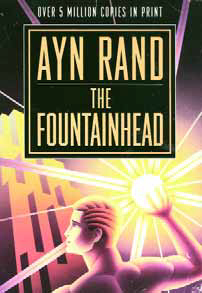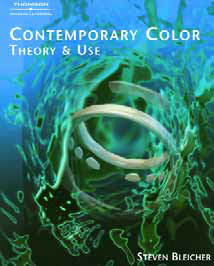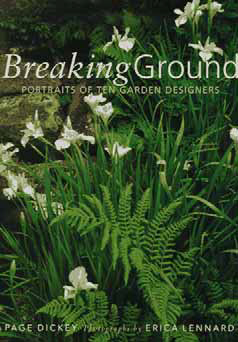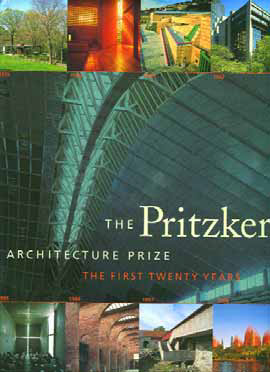Book & Media Reviews
Every once in a while, I find it useful to read something purely for inspiration. Especially as the busy season heats up, I truly enjoy the thought of stepping away from the grind and getting lost in the pages of a good book. Most recently, I picked up Ayn Rand's classic, The Fountainhead (Penguin Books, 1994), and found not only a terrifically entertaining story, but one that I also see as useful on the professional front because of its many insights into issues of creativity, design and personal integrity. Let me start by saying that I'm not offering this unusual entry as an endorsement of Rand's controversial philosophy. There are plenty of ideas presented in this long, 700-plus-page book that don't align with the way I see things, and I have no intention here of commenting on Rand's "objectivism" in any way. To me, the core of the story is
Just as nature inspires art, I believe that art can inspire landscape professionals to "paint" themes and moods into gardens. Claude Monet's work is a striking example of this unconventional relationship between art and landscaping, a connection explored fabulously in Monet the Gardener (Universe Publishing, 2002), a collaboration between Sydney Eddison, who writes and lectures on gardens; and Robert Gordon, a leading authority on French Impressionism. Together, they delve into Monet's obsession with his famous garden at Giverny, describing his fixation on flowers and the struggles he had in creating his lily pond. Included are letters from Monet, members of his family, journalists and writers from the late 1800s, all of them chronicling the artist's choices among
Swimming pools and other watershapes make great subjects for photographers, which makes it logical that every year or two I've be able to amass a new collection of these books to review. In general, publications such as these are all about pretty projects and are aimed mainly at consumers, but I've always found them useful as sources for design ideas and, in general, as a means of seeing what other people are doing. For the most part, however, these publications are not particularly "informative": Once you get past the pictures, there's really not much else there to build knowledge or advance the craft. Such is the case with all four of the publications I'll cover here in quick, round-up fashion. All are beautifully illustrated, and some display an interesting range when it comes to
If you've yet to read any of the works of business guru Tom Peters, you're in for a real treat. A few years ago Peters wrote Re-Imagine, a book that established his reputation as a leader in the field of business philosophy and education. Last year, he released a trilogy of new books that expand on the themes and discussions that have made him both well known and hugely respected. Although published in three separate volumes, this series - Tom Peters Essentials: Leadership, Tom Peters Essentials: Talent and Tom Peters Essentials: Trends (all from DK Publishing, 2005) - is basically a single, remarkably well-written treatise loaded with
Watershaping has changed dramatically through the past several years, and we all could probably come up with a hundred different reasons why. Here's the upshot: Clients are no longer merely asking us to build pools, spas or other bodies of water. Instead, they're asking us to create complete settings that include water. And when you compare where we are now to where we were, say, seven years ago, it's as though everything is different. What the changes mean is that many of us have been or are being forced to seek out more sophisticated approaches to the design process. I recently finished a book that provides amazing insight into exactly that process: Basic Elements of Landscape Architectural Design by Norman K. Booth (Waveland Press, 1990). The book was recommended to me by fellow landscape architect and watershaper
Every once in a while, I run across an area of design theory or philosophy that is so fundamental that I'm left to wonder how I've been able to do what I do for a living without a complete understanding of it. Color theory is one such field of study. For a long time now, I've known that the factor that very often makes or breaks a project is not the price of the materials or the presence of bells and whistles, but rather how well the colors work, both with each other and in the context of the overall setting. Even simple projects with modestly priced materials can be ranked among the beautiful if the colors work. By the same token, there are extremely elaborate projects that fail to live up to their potential (or fail altogether) when color choices are off base. My sense that this was something I needed to know more about led me to
Every once in a while, I run across an area of design theory or philosophy that is so fundamental that I'm left to wonder how I've been able to do what I do for a living without a complete understanding of it. Color theory is one such field of study. For a long time now, I've known that the factor that very often makes or breaks a project is not the price of the materials or the presence of bells and whistles, but rather how well the colors work, both with each other and in the context of the overall setting. Even simple projects with modestly priced materials can be ranked among the beautiful if the colors work. By the same token, there are extremely elaborate projects that fail to live up to their potential (or fail altogether) when color choices are off base. My sense that this was something I needed to know more about led me to
It's no exaggeration to say that landscape design, whether residential or commercial, is in something of a rut these days. Nor is it saying anything new. Even in settings separated by great distance - a planned community in Plano, Texas, for example, compared to one in Toms River, N.J. - you'll find almost the exact same hardscape and planting treatments. There's just an incredible homogeneity in design these days. If you find yourself depressed by that predictability (or are stuck in those creative doldrums yourself), I strongly recommend picking up a copy of Breaking Ground: Portraits of Ten Garden Designers (Artisan, a division of Workman Publishing, 1997). Written by Page Dickey, this heavily illustrated 208-page text treats us to insightful and intimate looks at a set of extraordinarily diverse
It's no exaggeration to say that landscape design, whether residential or commercial, is in something of a rut these days. Nor is it saying anything new. Even in settings separated by great distance - a planned community in Plano, Texas, for example, compared to one in Toms River, N.J. - you'll find almost the exact same hardscape and planting treatments. There's just an incredible homogeneity in design these days. If you find yourself depressed by that predictability (or are stuck in those creative doldrums yourself), I strongly recommend picking up a copy of Breaking Ground: Portraits of Ten Garden Designers (Artisan, a division of Workman Publishing, 1997). Written by Page Dickey, this heavily illustrated 208-page text treats us to insightful and intimate looks at a set of extraordinarily diverse
Awards, prizes and accolades can serve as a great way to learn about the top professionals in any given field. As a case in point, I recently picked up a copy of The Pritzker Architecture Prize (Harry Abrams, 1999), a beautifully illustrated 200-plus-page tribute to the first 20 winners of this prestigious annual award, which is given to recognize lifetimes of achievement. Established in 1974 by Pritzker family (founders of the Hyatt chain of hotels), the stated goal of the prize program is to increase awareness of reigning architectural geniuses. Most of the prize recipients are still alive and working, and the list of winners includes some of the most extraordinary designers of the second half of the 20th Century, including Philip Johnson, Luis Barragan, I.M. Pei and Tadao Ando, to name a few. Some I had heard of before, but several were new to me. In all cases, this




















